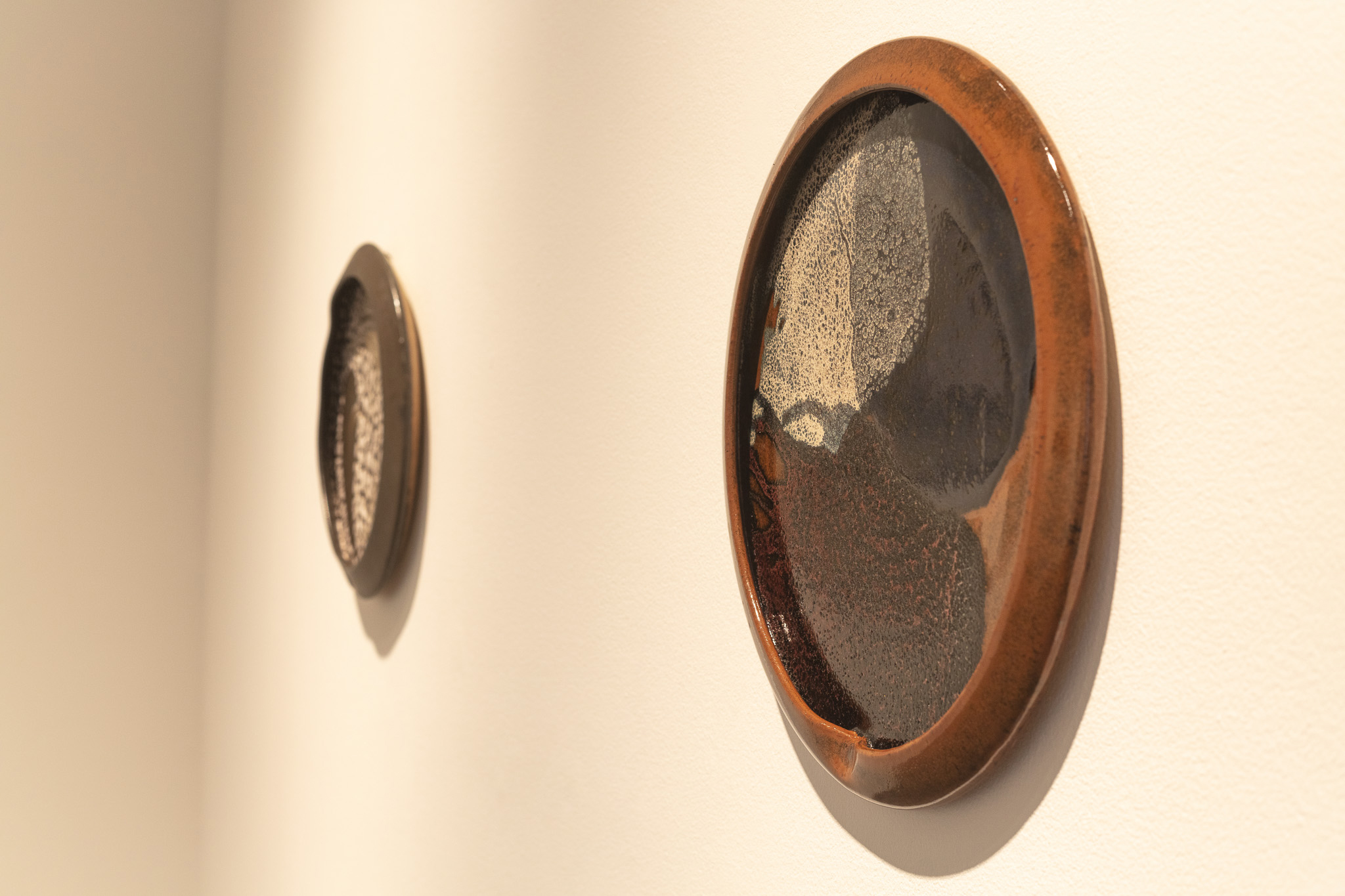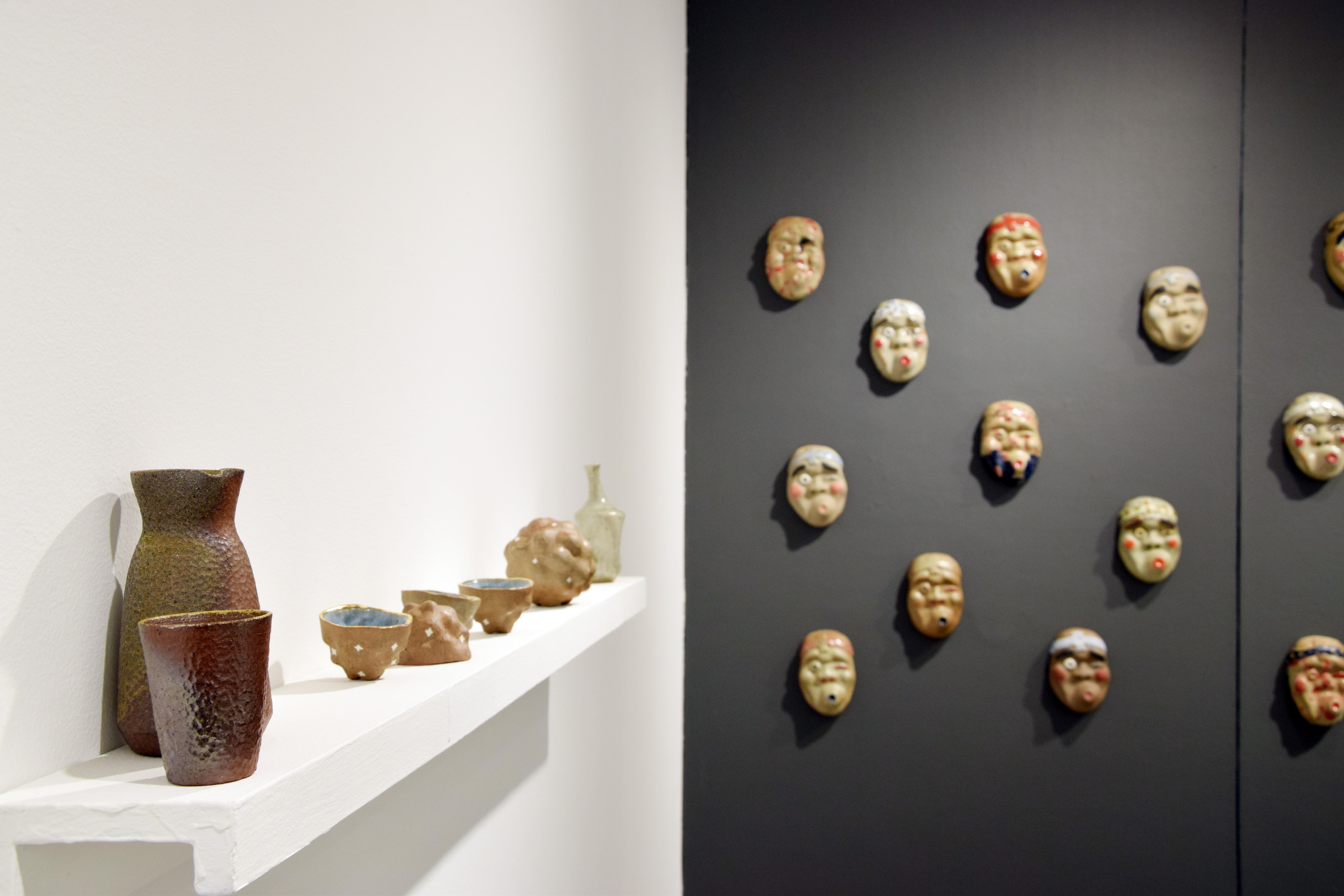
A couple of years ago, as a freshman in college, I had this literature professor—an older, burly man—whose daily agenda, it seemed, was to engage in an endless stream of tangents. He would begin, purposefully enough, with a summary of the assigned chapter but soon pivot to all kinds of digressions, including tirades on incompetent senators, critiques of Foucaldian theory, and, on occasion, reminisces about former students.
One ramble continues to stick in my memory: some years back, a student of his had the eccentric habit of speaking to her things. He recalled with a lightly mocking air how she would greet her pencil case “good morning!” or apologize to her backpack for dropping it on the floor. It could be that the reason that story lingers with me to this day is because I’ve always felt that my professor shortchanged this student by presenting her to the class as borderline demented, outlandish, like a cartoon character. That urge to defend her remains: to counter my professor and tell him that maybe there’s a morsel of insight to be gained from his former student’s respect for the things she owned. That, despite the overt quirkiness of her approach, she may have been onto something.
Two recent exhibits concentrating on the medium of clay returned me to that student’s peculiar open-heartedness and affection for objects. These common, intimate things at Galerie Stephanie and Steps at Silverlens both revel in the fertile possibilities of clay—as a space for experimentation and, more excitingly, as a frame through which we may renew our sense of the world.
Clay is a medium imbued with dualisms. Malleable yet eventually breakable. Equally homespun and exacting. Its labor-intensive process, a primal alchemy of the elements, yields a delicate form. In the world of ceramics, there’s no foolproof logic: everything requires concentrated preparation but the outcome can never be totally predetermined. It’s an artform that feels so knowable and yet so elusive at the same time; a range of factors come into play—the conditions of the environment, the methods of firing and glazing, the type of kiln—to create something (and here’s another dualism) that fuses aesthetics with functional cohesion.
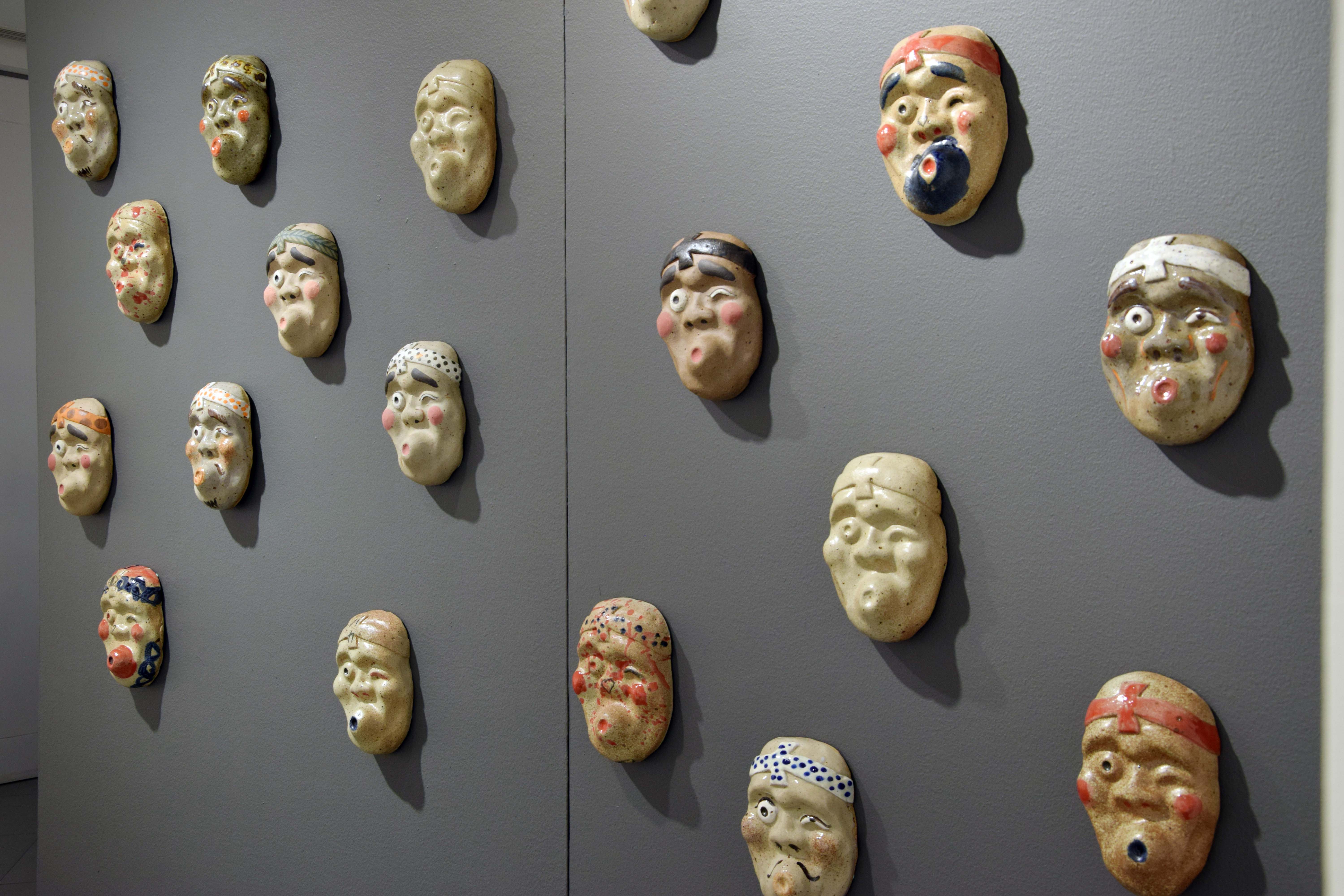
Craftware, handicrafts, implements. The work of ceramics is typically aligned with these practical terms, and often pitted against the conventional agendas of art, inscribed within the narrow lines of the individual artist figure, the gallery institution, and a certain formal aestheticism. Soetsu Yanagi, in The Beauty of Everyday Things, has deployed the term “folk art” to describe these ordinary objects deeply embedded in daily life. “Folk art should not be the result of an extraordinary sense of awareness,” the Japanese philosopher argued, “it must be something ordinary, born from the ordinary.”
Drawing its title from a passage in Yanagi’s 1926 essay on “the beauty of miscellaneous things,” the group exhibition These common, intimate things thankfully feels unencumbered by hackneyed binaries of craft and art, practicality and aesthetics. Instead, the show presents a view of ceramics that’s at home in both worlds, accommodating the functional while buzzing with enchantment and beauty.
The show’s charm is particular yet expansive. It’s suddenly playtime: a table is set with knick-knacks as though persuading us to relive childhood’s mess. There is, on one end, whimsy-filled cloud-formed stonewares, and on the other, the impish faces of glazed and fired Hyottoko masks. Despite looking familiar on the surface, these objects—with some time and attention—reveal their oddities. The edges of Jezzel Wee’s anagama-fired sake set, for instance, slope towards one end, as though on the verge of melting. A tiny vessel features a stopper molded in the withered figure of a skull. Elsewhere, there are vases of varying sizes, textures, and shapes, all of which evoke lively rummage. Clay is sculpted and fired to recall a cosmic universe, lush with nuts, shells, stones, and most curiously, a giraffe’s neck.
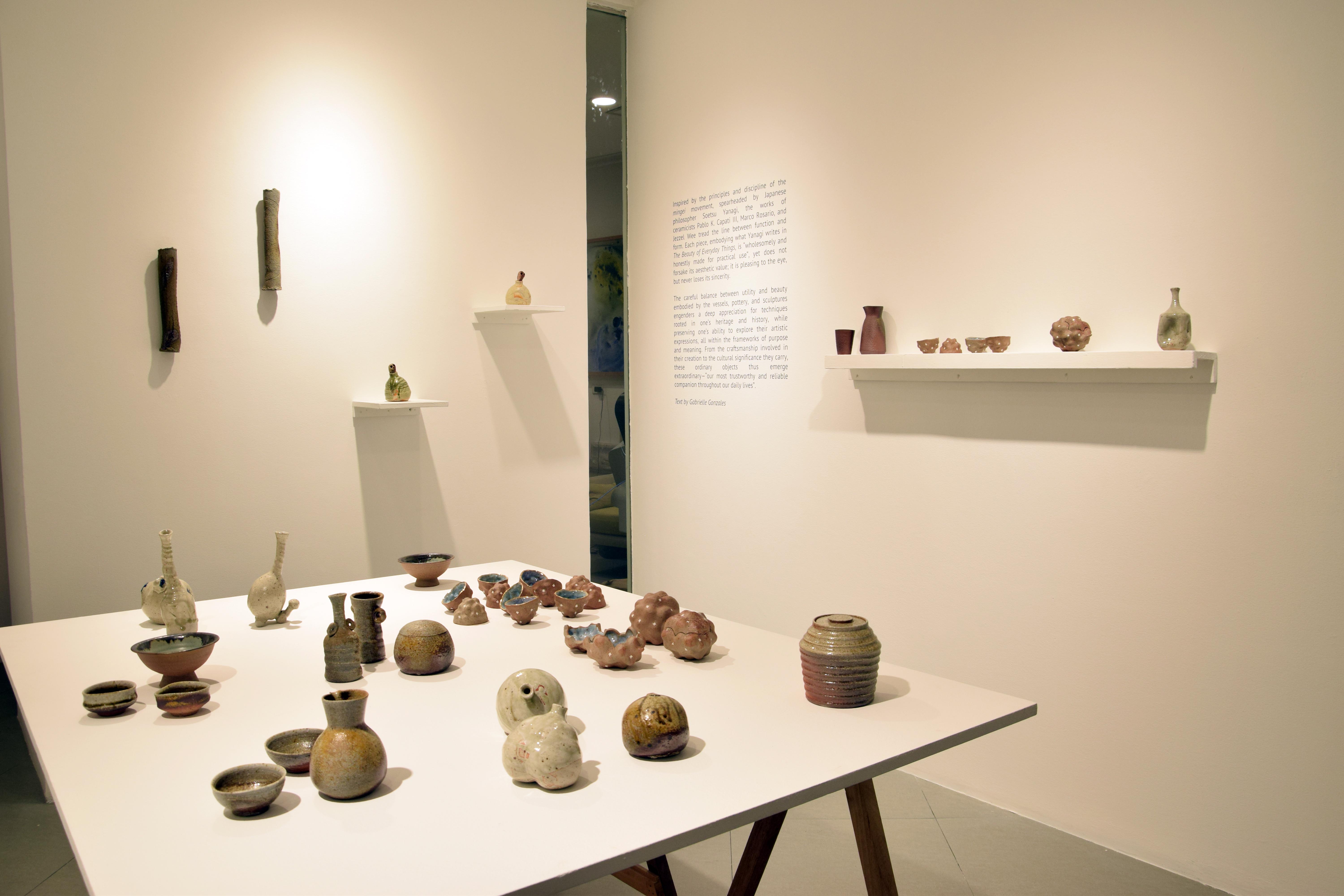
Running through clay’s mercurial capacities is a resonant sense of intimacy. One notices the ceramicist’s unique relationship to the medium in each stroke, angle, nudge of the hand. All the artists here, namely Pablo K. Capati III, Marco Rosario, and Jezzel Wee, bring out clay’s personality in strikingly vivid and unique ways.
Where Galerie Stephanie’s These common, intimate things looked lightheartedly at the natural world and Japanese crafting methods to consider clay’s potentials, Jon Pettyjohn’s solo exhibition at Silverlens, titled Steps, takes a more sober approach. One notices in Pettyjohn’s detail-crammed and distorted plates an attempt to forge a vocabulary to make sense of life’s turbulence. Clay here is painted over to depict an atmosphere of reckless change: craters at the edge of the earth, desert cracks, a rumbling tsunami wave. It’s a clever reversal of Yanagi’s dictum. Pettyjohn’s clay firings are yoked to tumultuous circumstances, alluding to the violence, isolation, and loss resulting from the COVID-19 pandemic. Extraordinary circumstances call for a similarly out-of-the-ordinary approach, and Pettyjohn—considered one of the pioneers of Philippine ceramic art—is certainly up to the task.
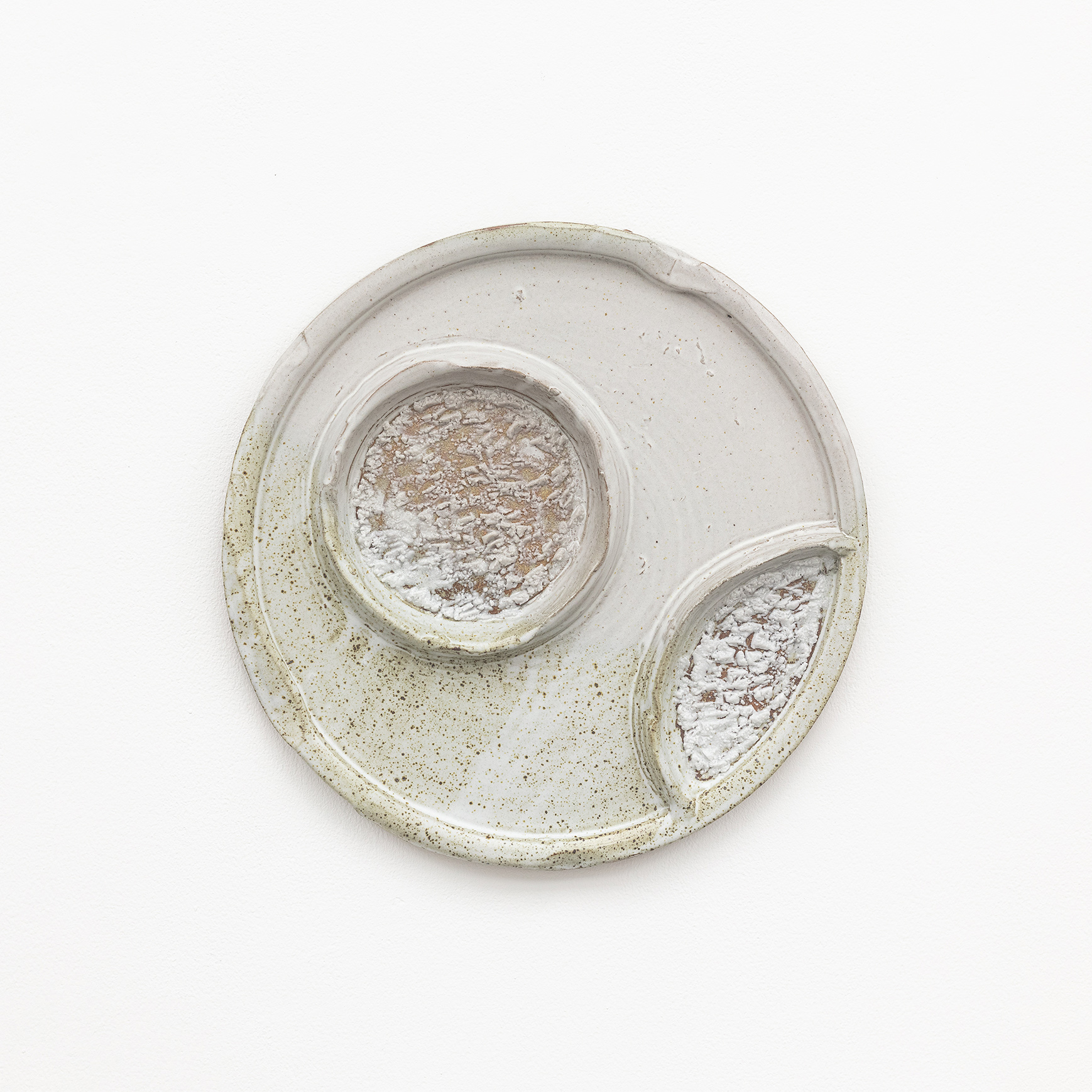
“Crater” depicts a cavity ravaged by natural forces, eroded ruthlessly over time. It’s a highly textural work, using absence and destruction as animating forces for structure; “Crater,” in its frank impression of desolation, is a welcome reprieve from Pettyjohn’s more verdant—and traditionalist—canvases alluding to forest, soil, and sea. Although clay is subjected to the brutal, deathly forces of heat and air, Pettyjohn’s craftsmanship testifies as well to the vigor of life itself.
“Fire,” shaded in a flush of fervent red, derives its power from its bold recognition of blood as a symbol of violence but also the fabric that makes life viable. Pettyjohn renders texture in these works thrillingly—as a tiny ripple slowly accruing power, as gnarled terra firma. They invite our gaze not towards analytical inspection, but towards a patiently unfolding curiosity.
In these two exhibitions, we chance upon a perspective of clay that refuses to settle contradictions. Between craft and art, function and form, these shows simply relish in the potency of the medium, reinvigorating in turn our sense of belongingness with the simplest of objects—objects not only to glance at or examine, but to cherish.
These common, intimate things by Pablo K. Capati III, Marco Rosario, Jezzel Wee ran from June 2-18 at Galerie Stephanie in Mandaluyong City.
Steps by Jon Pettyjohn continues at Silverlens in Makati City until July 8.
Sean Carballo is a writer and undergraduate from the Ateneo de Manila University.

